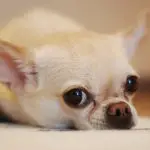Putting your dog on a diet for weight loss
Most dogs will begin to be less active and will self-exercise less as they age. Some breeds are naturally more likely to gain weight and be couch dogs rather than active pets, so it is important to help them eat only the food they need, not all that they want. Some dogs are naturally able to regulate their food whereas other dogs simply eat until they can’t hold another bite. Understanding how your dog eats and how much they eat can help you determine how to best help them manage their weight or how to effectively help them lose weight.
To get your dog started on a lifestyle change and diet that is needed to help an already overweight dog start to get in shape consider the following:
· Cut out all snacks, treats and food items other than the actual dog food. This means no high carb or sugary treats, no extra little scraps from the table or even any dog cookies. High quality treats can be reintroduced to the diet on a very limited amount once the weight has been lost.
· Unless there is a reason why your dog must be on wet food switch to a high quality premium dry food only, but not necessarily a weight loss formula. Most dogs will lose weight even on regular kibble provided all the other aspects of the plan are followed. Ask your vet for recommendations for foods that would be beneficial to your particular dog. Switch the food slowly and gradually to avoid digestive problems. Don’t worry if the dog refuses to eat the dry, especially if it is a picky eater, it will eat when it gets hungry. If the dog does not eat for two days and you are exercising the dog as outlined contact your vet before proceeding with the food selection.
· Increase exercise – and this involves your participation. Most dogs, especially those that are overweight, simply do not exercise themselves. Putting them outside in the yard for an extra hour doesn’t count since they will likely take a leisurely stroll around the yard, find a comfortable spot and rest. You must make them keep moving. Take them on a leash for a walk around the block at least twice a day. Once they can do one block, increase to two and keep increasing the distance and the pace of the exercise. Start slow and gradually increase to avoid stressing both the dog and yourself!
· Increase play times. Try throwing a ball or a stick for the dog, or playing a game of tag or chase. Start slow, even just rolling the ball to get the dog involved. Lots of praise and attention during the game will help keep them motivated and engaged.
· Plan a regular “play date” for your dog with another dog if he or she is an only dog in your house. Running and playing with another dog is great exercise and gives you a chance to supervise and relax.
· Cut down on the dog food by a quarter to start. If you are normally feeding 1 cup twice a day feed ¾ of a cup twice a day. Never cut out a meal, simply cut down on each meal. It is recommended to feed two smaller meals rather than just one meal to keep blood sugar better regulated for the dog.
· Check your yard and house for hidden food items. Many dogs have learned to get into the garbage, get into cupboards and raid the treat boxes or even get into candy dishes left on the coffee table. Remove all sources of food from where the dog can access.
Keep on the plan for two weeks, decreasing each mean by one quarter and doubling a reasonable level of exercise. You should notice a slight weight loss in this period. You can either weigh the dog by using a standard bath scale or, for large breeds, simply use a measuring tape around the widest part of the their body. If you have followed the plan and are decreasing food, increasing exercise and cutting out all treats and do not notice even a slight decrease in weight after two weeks see your veterinarian immediately to rule out any medical problems.


